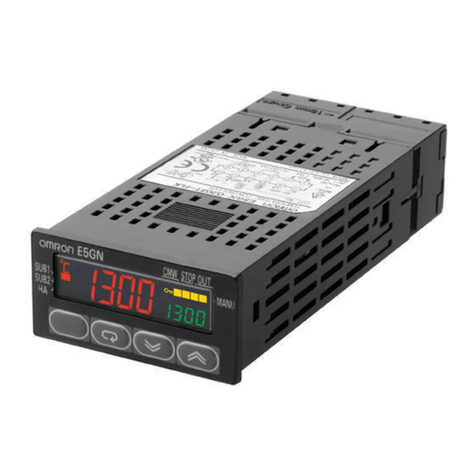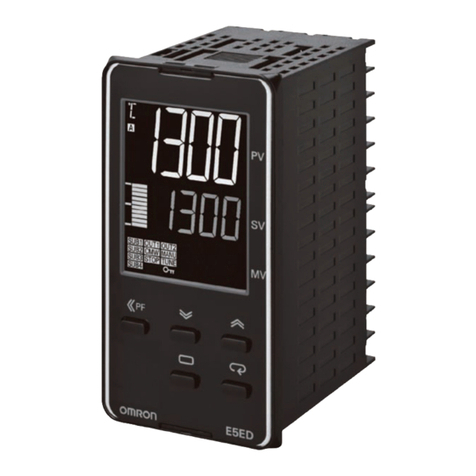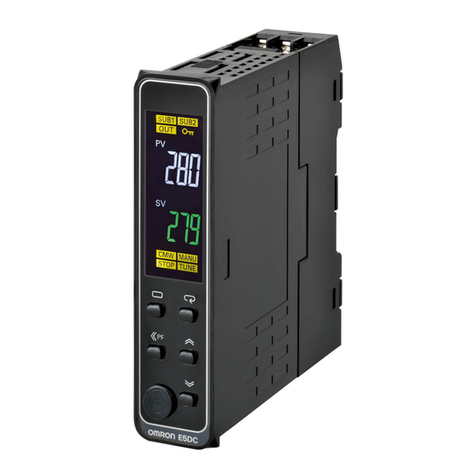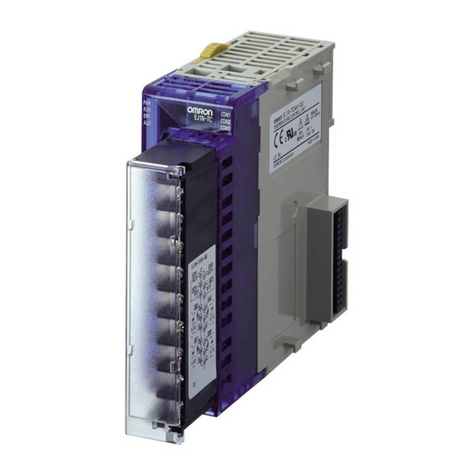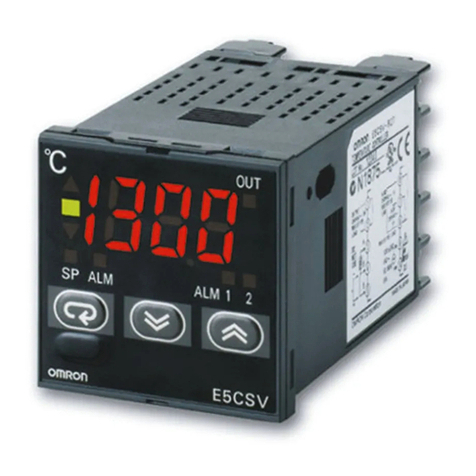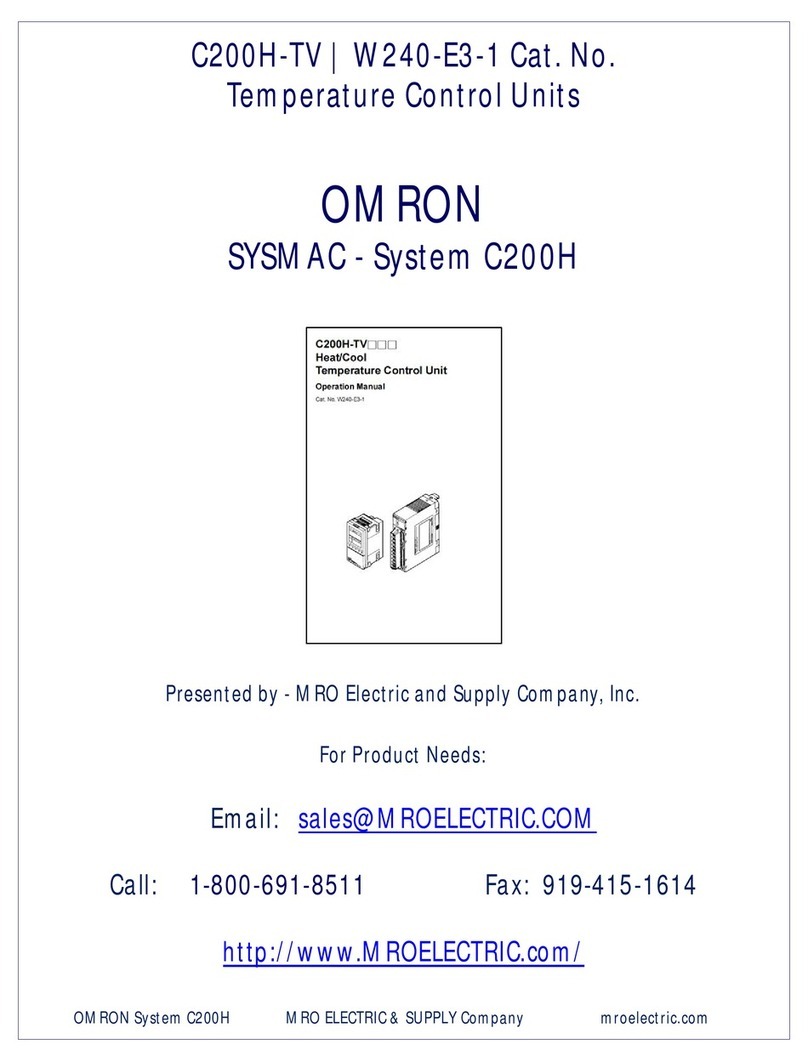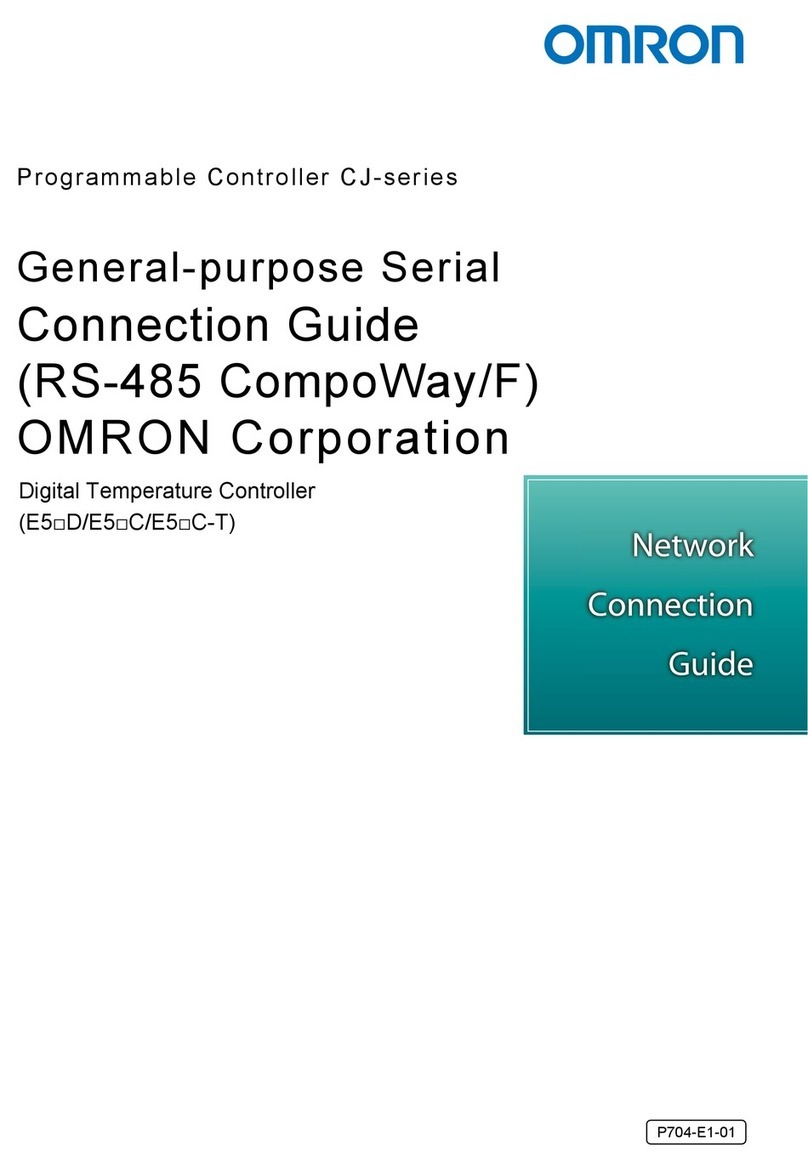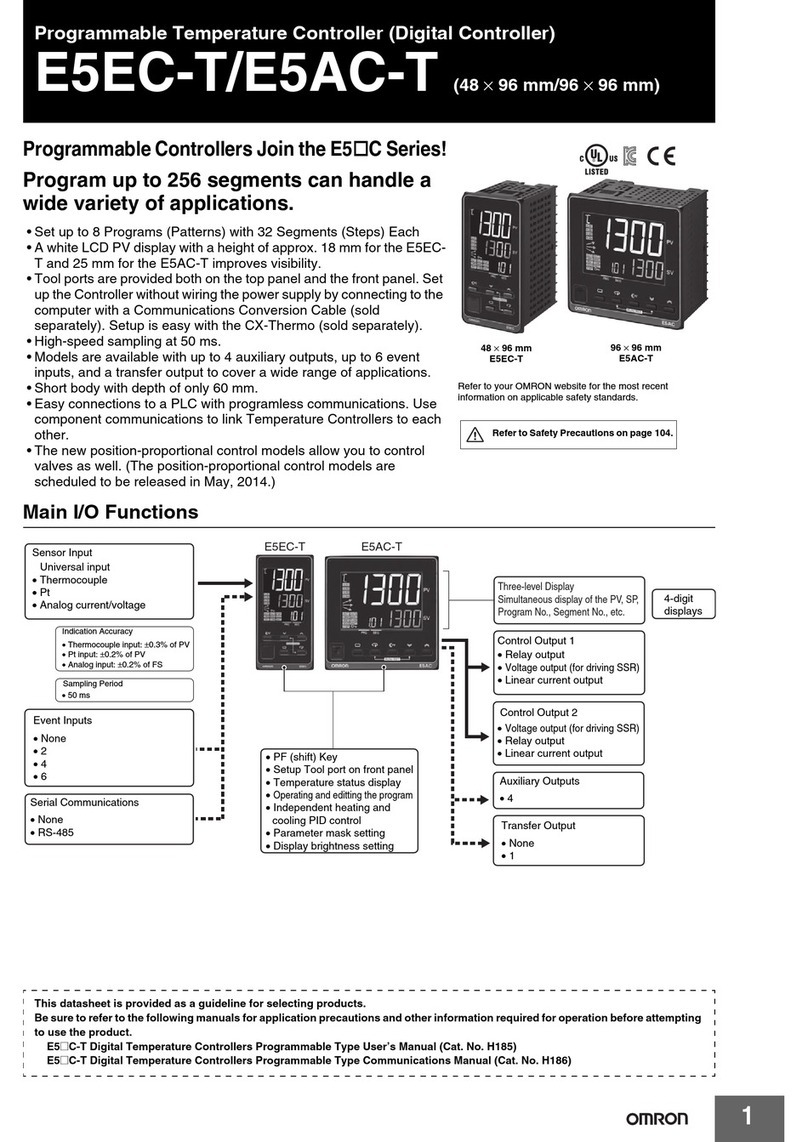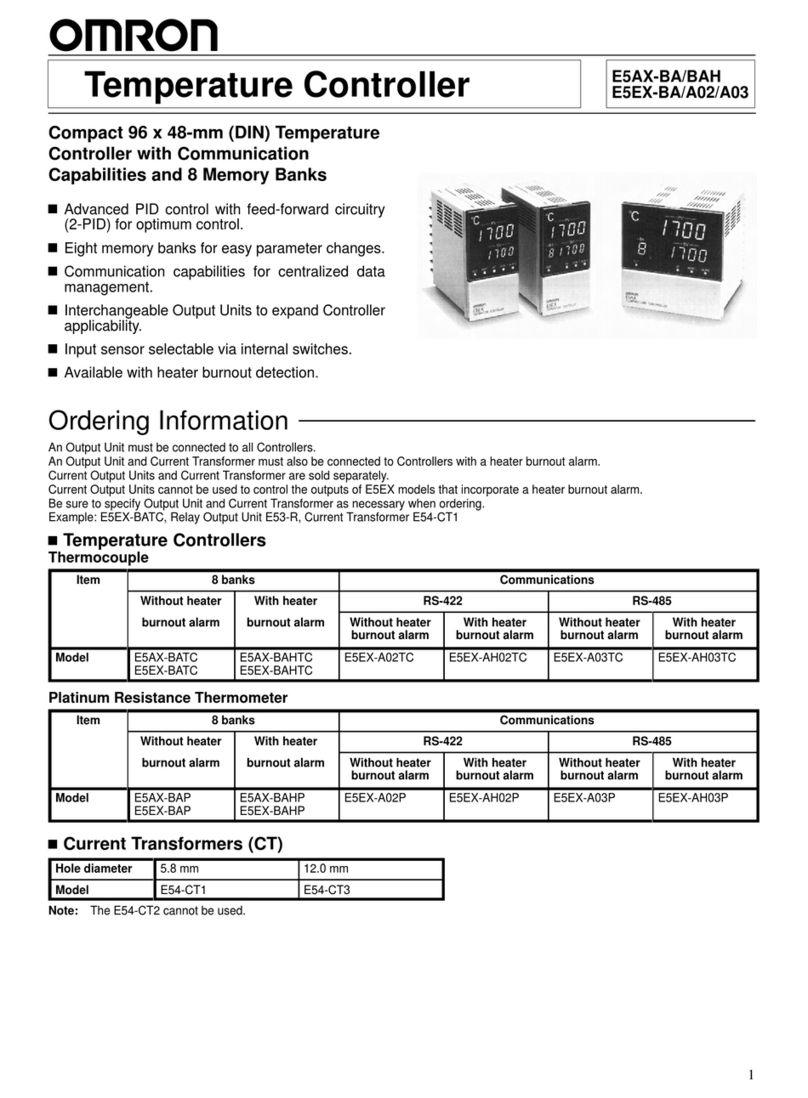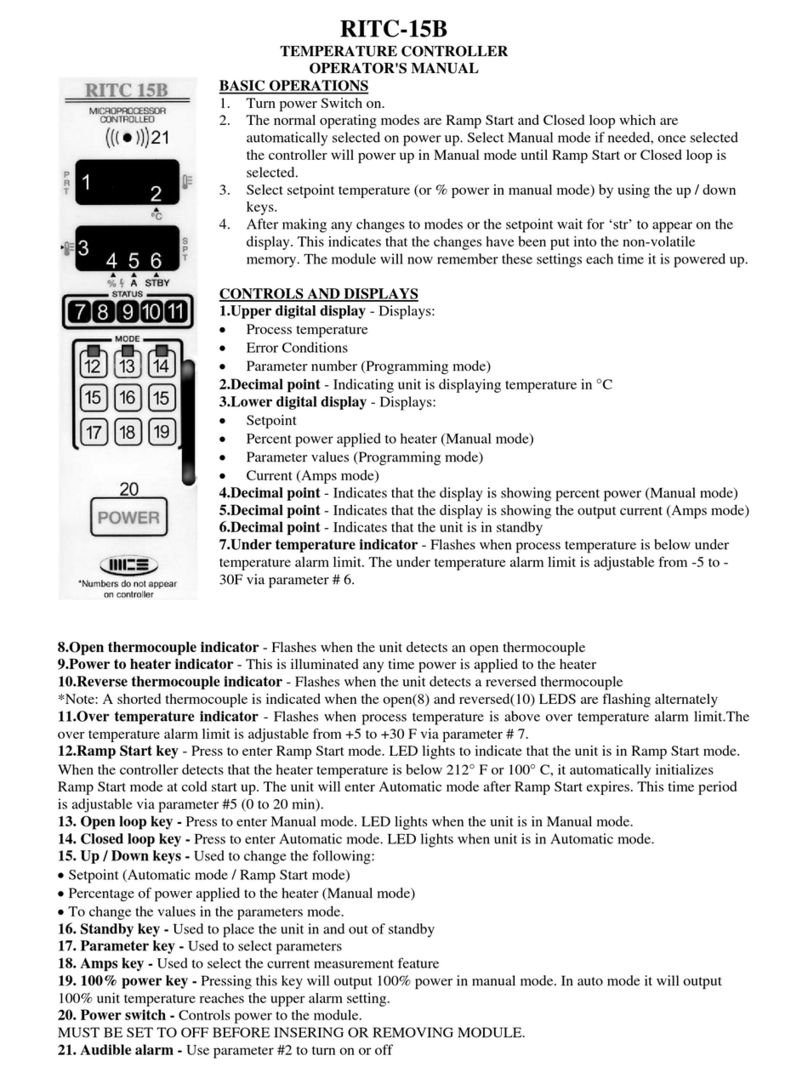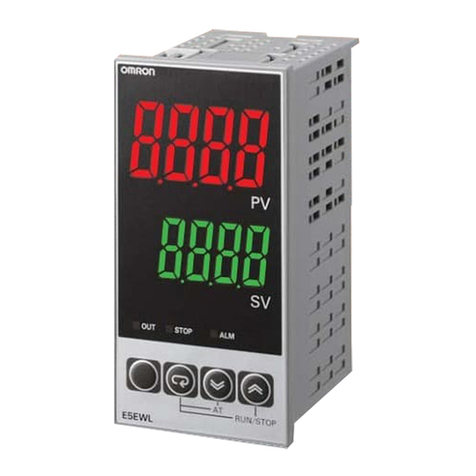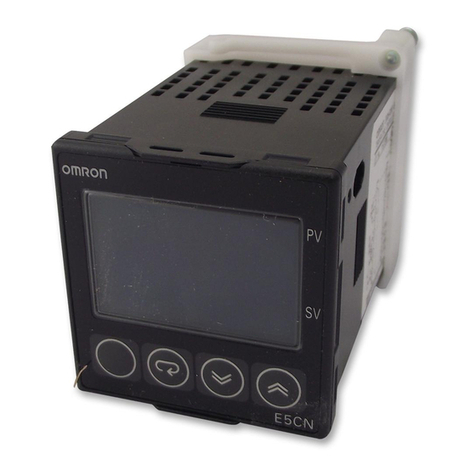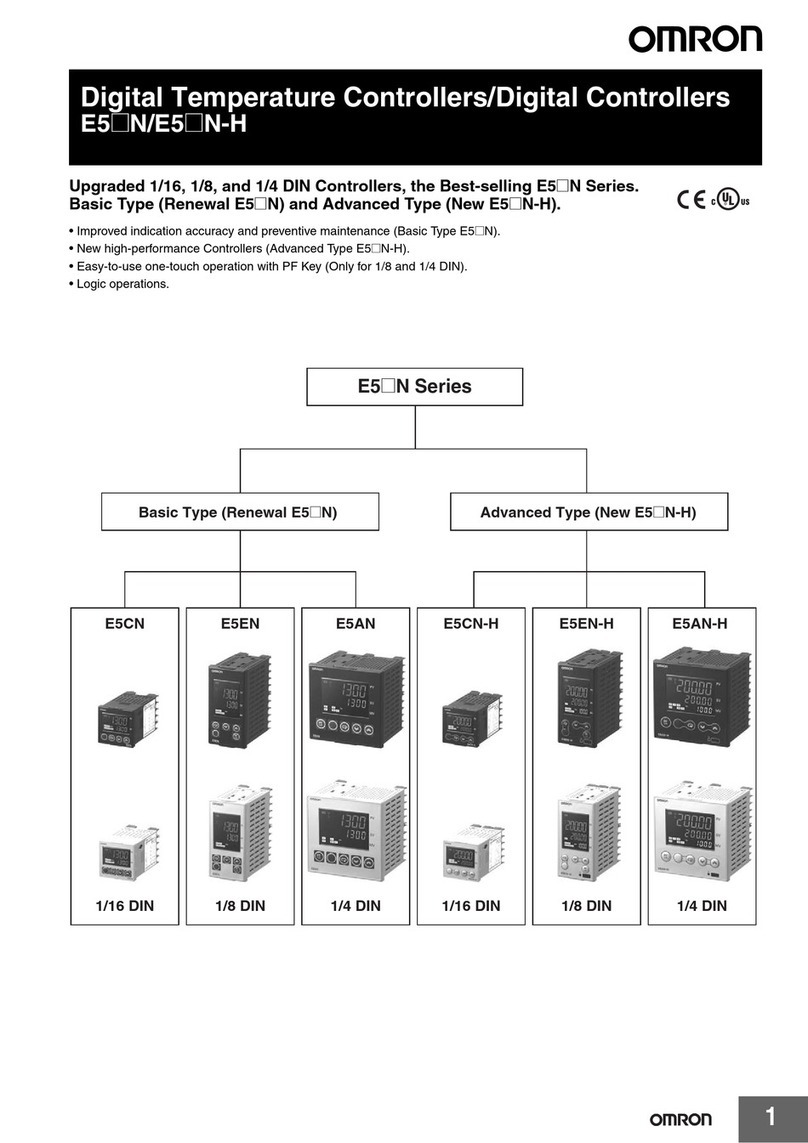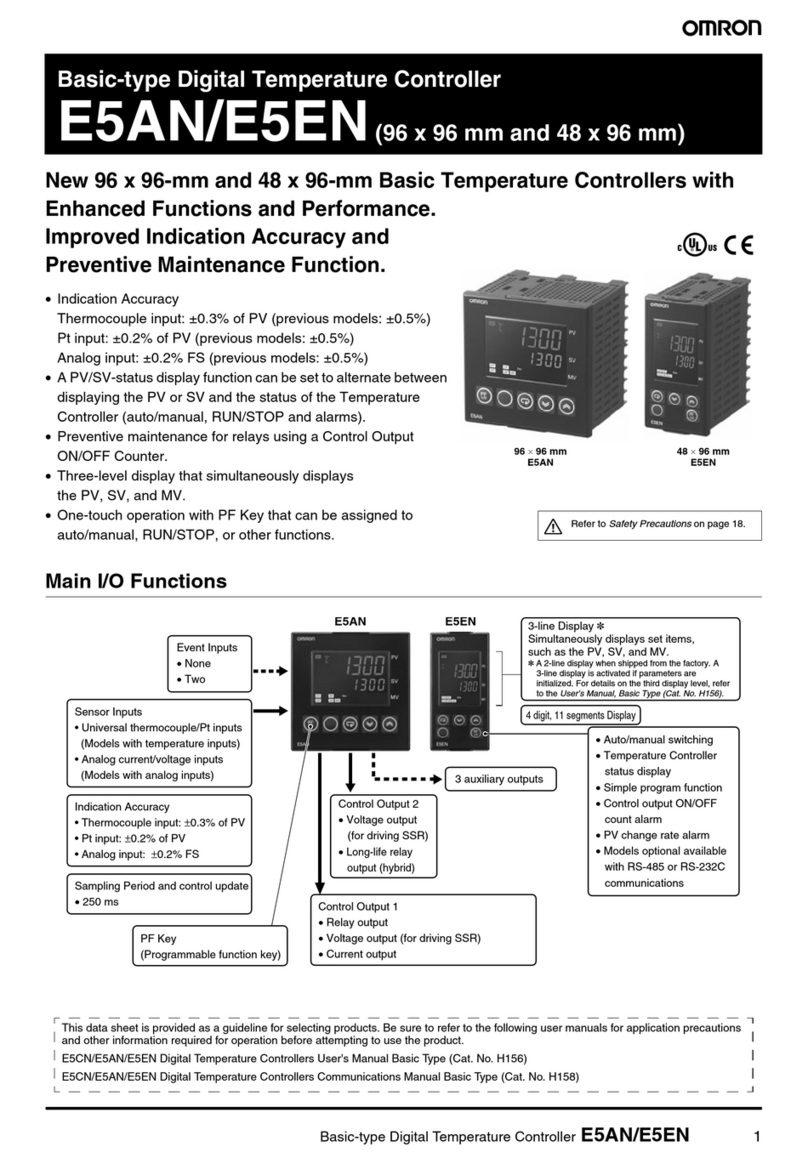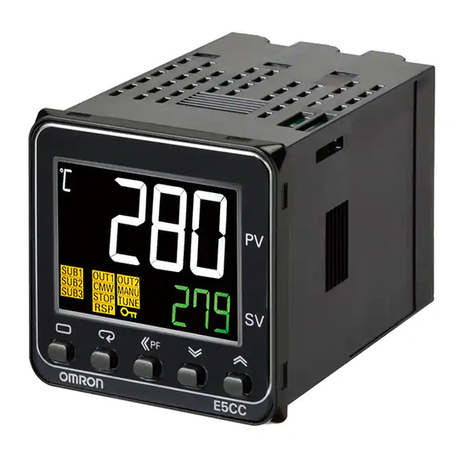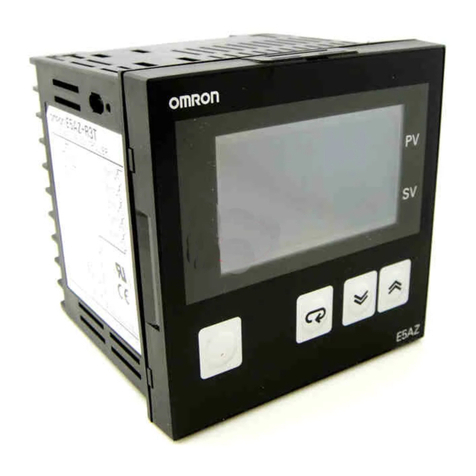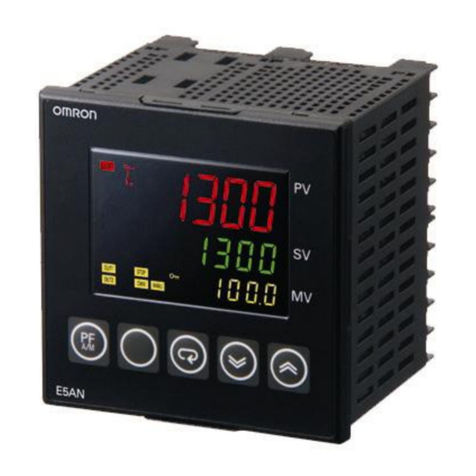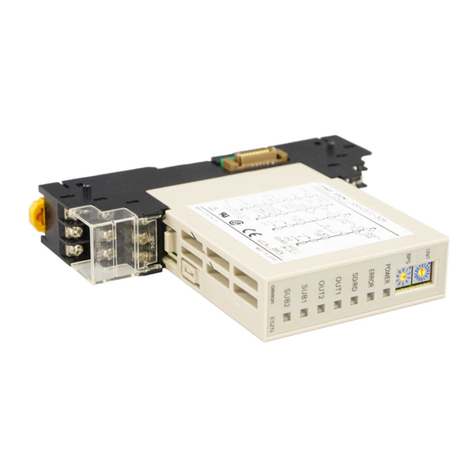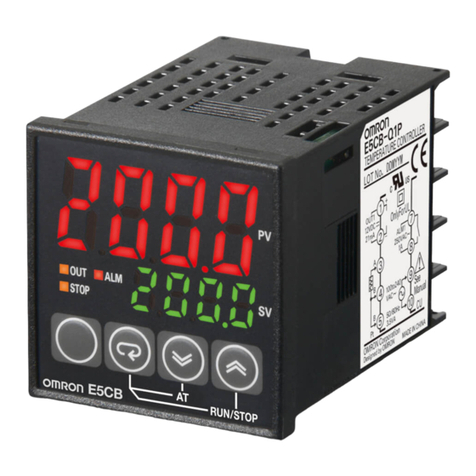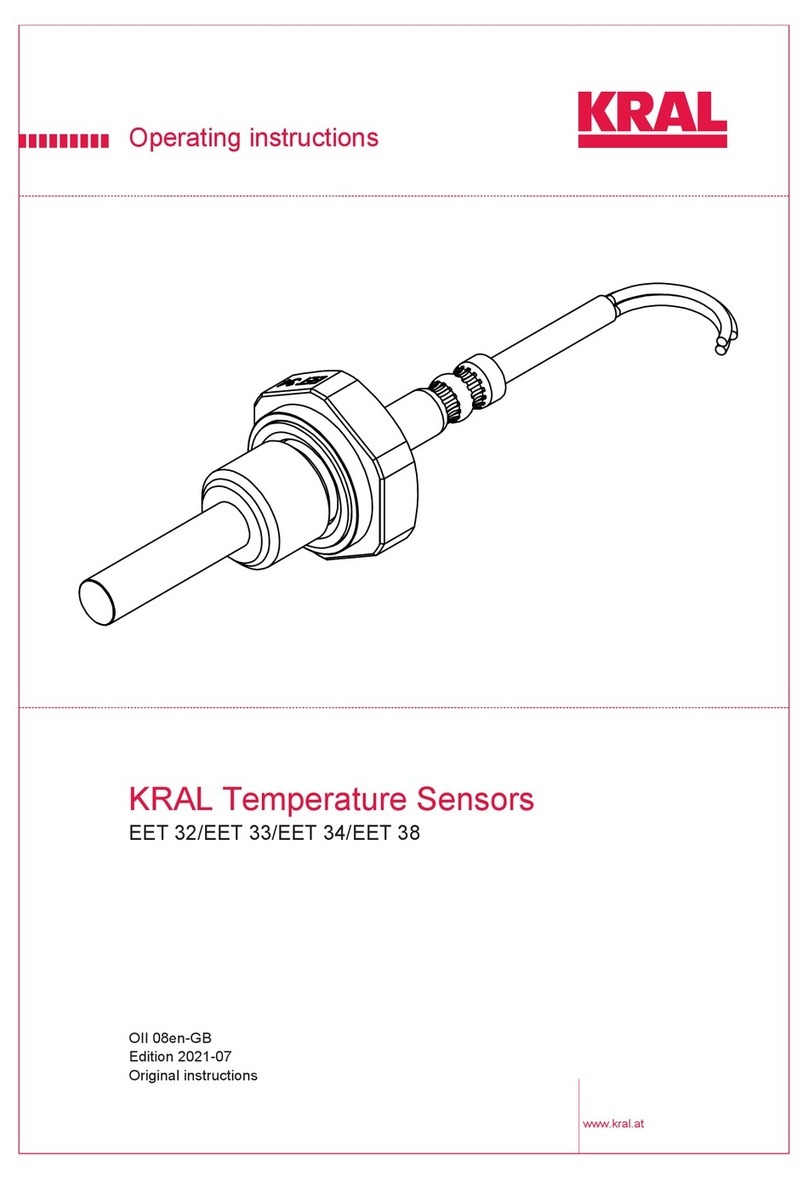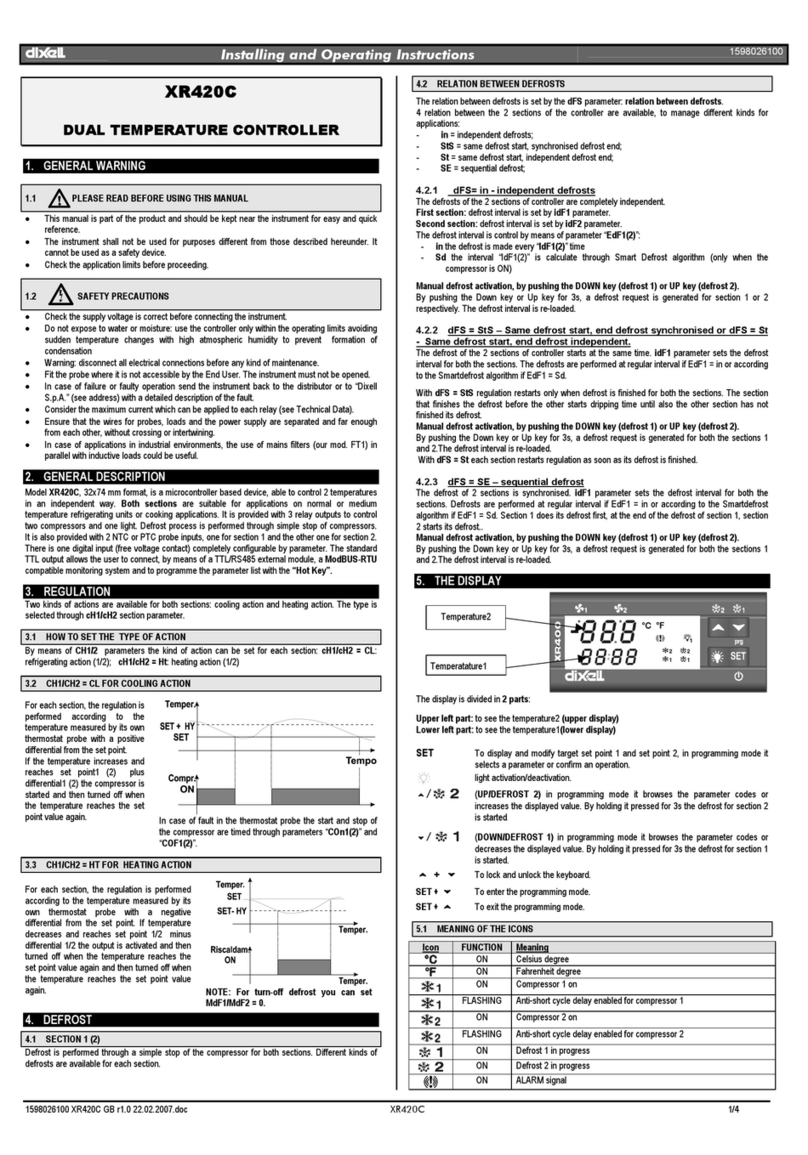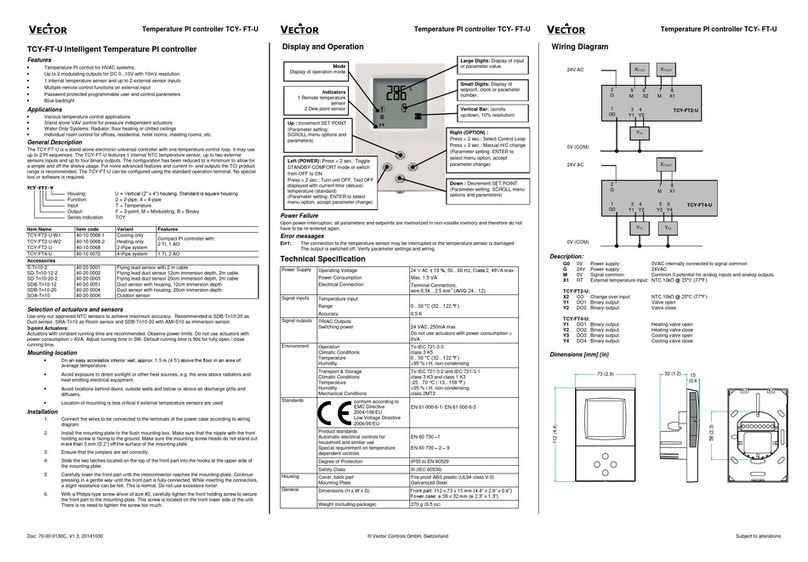
Digital Temperature Controllers E5GN 9
Operation
■Specification Setting after Turning ON Power
Outline of Operation Procedures
Key Operation
In the following descriptions, all the parameters are introduced in the display sequence. Some parameters may not be displayed depending on the
protect settings and operation conditions.
Description of Each Level
Operation Level
This level is displayed when you turn the power ON. You can move to
the protect level, initial setting level and adjustment level from this
level.
Normally, select this level during operation. During operation, the
process value, set point and manipulated variable can be monitored,
and the alarm value and upper- and lower-limit alarms can be moni-
tored and modified.
Adjustment Level
To select this level, press the key once for less than one second.
This level is for entering set values and offset values for control. This
level contains parameters for setting the set values, AT (auto-tuning),
communications writing enable/disable, hysteresis, multi-SP, input
shift values, heater burnout alarm (HBA) and PID constants. You can
move to the top parameter of the operation level or initial setting level
from here.
Initial Setting Level
To select this level, press the key for at least three seconds in the
operation level. This level is for specifying the input type, selecting
the control method, control period, setting direct/reverse action and
alarm type. You can move to the advanced function setting level or
communications setting level from this initial setting level. To return to
the operation level, press the key for at least one second. To
move to the communications setting level, press the key once for
less than one second.
Protect Level
To select this level, simultaneously press the and keys for at
least 3 seconds. This level is to prevent unwanted or accidental mod-
ification of parameters. Protected levels will not be displayed, and so
the parameters in that level cannot be modified.
Communications Setting Level
To select this level, press the key once for less than one second in
the initial setting level. When the communications function is used,
set the communications conditions in this level. Communicating with
a personal computer (host computer) allows set points to be read
and written, and manipulated variables to be monitored.
Advanced Function Setting Level
To select this level, you must enter the password (“-169”) in the initial
setting level.
You can move only to the calibration level from this level.
This level is for setting the automatic return of display mode, MV lim-
iter, event input assignment, standby sequence, alarm hysteresis, ST
(self-tune) and to move to the user calibration level.
Calibration Level
To select this level, you must enter the password (“1201”) in the
advanced function setting level. This level is for offsetting deviation in
the input circuit.
You cannot move to other levels by operating the keys on the front
panel from the calibration level. To cancel this level, turn the power
OFF then back ON again.
Power ON
Operation level Adjustment level
+ key
1 second min.
Control stops.
Protect level
Initial setting level
Calibration level
Control in progress
Control stopped
Level change
key
1 second min.
+ key
3 seconds min.
+ key
Display flashes when key pressed.
key
key
Less than
1 second
key
1 second
min.
key
3 seconds
min.
Display flashes when key held
down for more than 1 second.
Communica-
tions setting
level
key
Less than
1 second
Password input
set value "−169"
Advanced function
setting level
Password input
set value "1201"
The time taken to move to the protect level
can be adjusted by changing the "Move to
protect level time" setting.
Note: 1. Of these levels, the initial setting level, communications
setting level, advanced function setting level and cali-
bration level can be used only when control has stop-
ped. Note that control is stopped when these four levels
are selected. When switched back to the operation level
from one of these levels, control will start.
2. For the calibration mode, refer to the relevant User's
Manual.
3. On the E5GN, the Key is the Key.
25
100
25
100
